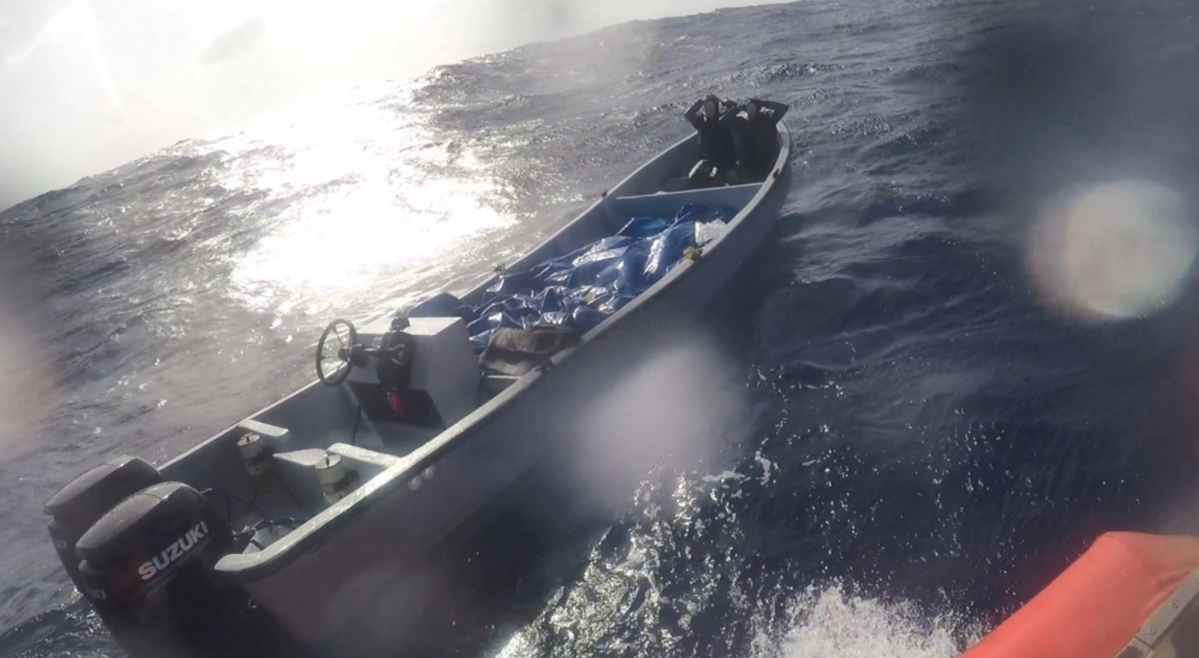DIU wants nonlethal weapons to disable small boats, amid US crackdown on drug cartels

As the Trump administration unleashes a new strategy targeting Latin American drug cartels determined to be “narcoterrorists” with direct military action, the Pentagon is moving to buy nonkinetic weapons that can disrupt, disable, or prevent the operation of small watercraft with minimal collateral damage or potential harm to nearby civilians and boat operators.
Submissions from interested companies are due by Sept. 30 for the Defense Innovation Unit’s new Show Stopper commercial solutions opening (CSO) initiative.
In it, DIU calls for prototypes that can be deployed by small Coast Guard boats while underway and are developed to the point where the government can begin testing in 60 days or less.
“The Department of Homeland Security (DHS) and the Department of War (DOW) are seeking solutions capable of reliably stopping non-compliant small watercraft without placing undue risk to the DHS/DOW personnel conducting these interdictions, operators/passengers onboard the non-compliant vessel (NCV), and nearby innocent civilians on the water,” the solicitation states. President Donald Trump recently signed an executive order authorizing the Department of Defense and its leadership to rebrand and use “Department of War” as a secondary title. A formal, legal name change requires an act of Congress.
The new CSO was released in the wake of multiple reports about the U.S. government using deadly force against alleged maritime drug traffickers at sea in recent weeks.
The president and his top advisers have been posting unclassified video clips and screenshots on social media that appear to show strikes against watercraft they allege were being run by dangerous international smugglers. The administration said the seemingly low-tech boats were shipping drugs to America and threatening national security — but critics, including lawmakers, raised concerns about what they view as a lack of conclusive evidence supporting those claims.
“To be honest, if I were a fisherman, I wouldn’t want to go fishing, either. … I’d say, ‘Man, maybe they think I have drugs downstairs, I don’t want that.’ I think the fishing business has probably been hurt,” Trump told reporters in the aftermath of one of the most recent operations.
Companies selected for awards based on their proposals under DIU’s CSO process will produce initial prototypes. From there, some may receive follow-on contracts with one or both of the departments.
“This has been a longstanding challenge and isn’t unique to narco-terrorists. Although the administration is tying it to current operations, the DOD (now DOW) and other agencies have long needed non-lethal or low-collateral damage options against small boats,” Bryan Clark, a Senior Fellow at the Hudson Institute, told DefenseScoop via email Thursday.
He noted that the Navy has been searching for better ways to defend against small boats that could carry IEDs since the USS Cole was attacked in 2000.
In the past, the sea service has used nets, port security barriers, loud hailers, and noisemakers, among other options. However, according to Clark, there hasn’t been a uniform approach to get after the issue to date.
“It is encouraging that the DOW is prioritizing this capability, even if the narco-trafficking threat is not the most important application of it. The most important application of this technology is countering one-way attack drone boats, like those that Ukraine uses against Russian naval forces or the Houthis used against the US Navy in the Red Sea. Although a ship could use lethal force against a drone boat, the boat’s nature may not be clear until it is too close to safely destroy,” Clark said. “Moreover, non-lethal attacks like electronic warfare could be more effective against mass attacks compared to using guns that can only shoot one target at a time.”
In the CSO, defense officials list a variety of attributes and functions that they envision for the capabilities they aim to adopt.
They note that the solutions should minimize installation size, weight, power, and any restrictions imposed on other systems onboard the maritime vessels — and that the capabilities “could be, but [are] not limited to, localized, non-kinetic energy (e.g., electromagnetic radiation), a novel Electronic Attack (EA) method, or other novel means.”
Clark, a defense technology expert who previously served as special assistant to the chief of naval operations and in other leadership roles, told DefenseScoop that this broadly represents “a mature technology area, and there are companies that build these non-lethal capabilities for the security industry.” Power plants and commercial ports are among those businesses’ customers.
The energy levels needed to disrupt a microchip or servo motor are much less than those that could injure a person, he also noted. High-power microwaves can disrupt electronics on a boat, like fuel control systems, steering, or guidance, and low-tech boats use low-voltage microelectronics for those functions that can be shut down if exposed to electromagnetic energy.
“The DOW has bought these kinds of capabilities on a very ad-hoc basis in the past, often with individual commands buying their own systems,” Clark said. “It would be helpful to have DIU identify some of the most effective capabilities and set up a mechanism for services to buy and field them at scale and more uniformly.”



